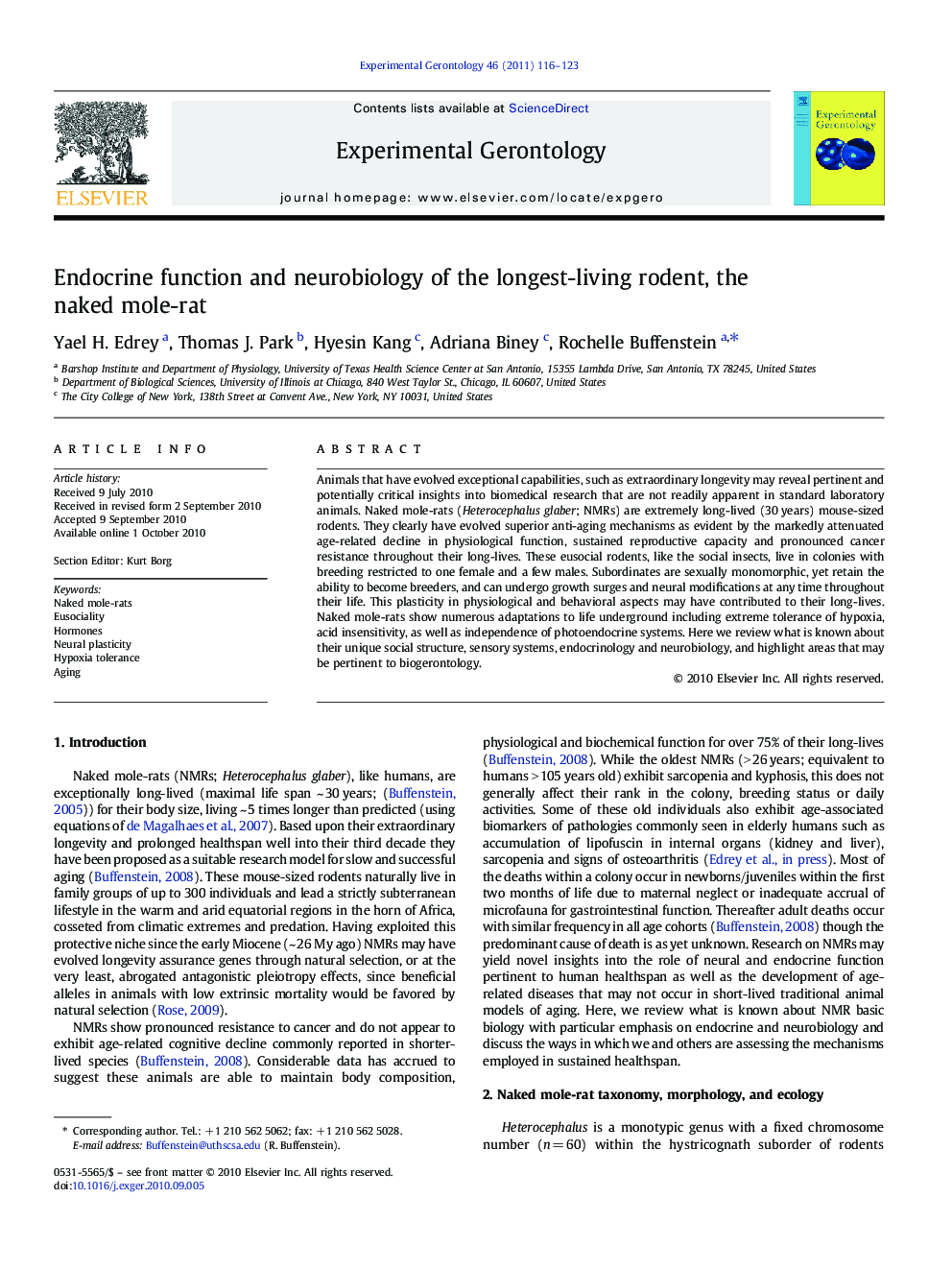| Article ID | Journal | Published Year | Pages | File Type |
|---|---|---|---|---|
| 1907112 | Experimental Gerontology | 2011 | 8 Pages |
Animals that have evolved exceptional capabilities, such as extraordinary longevity may reveal pertinent and potentially critical insights into biomedical research that are not readily apparent in standard laboratory animals. Naked mole-rats (Heterocephalus glaber; NMRs) are extremely long-lived (30 years) mouse-sized rodents. They clearly have evolved superior anti-aging mechanisms as evident by the markedly attenuated age-related decline in physiological function, sustained reproductive capacity and pronounced cancer resistance throughout their long-lives. These eusocial rodents, like the social insects, live in colonies with breeding restricted to one female and a few males. Subordinates are sexually monomorphic, yet retain the ability to become breeders, and can undergo growth surges and neural modifications at any time throughout their life. This plasticity in physiological and behavioral aspects may have contributed to their long-lives. Naked mole-rats show numerous adaptations to life underground including extreme tolerance of hypoxia, acid insensitivity, as well as independence of photoendocrine systems. Here we review what is known about their unique social structure, sensory systems, endocrinology and neurobiology, and highlight areas that may be pertinent to biogerontology.
Research Highlights► Long-lived naked mole-rats may hold the key to prolonged good health and slow aging. ► Metabolic hormones are sustained at low levels throughout their lives. ► Breeding females show no menopause or decline in fertility. ► Numerous neotenous-like neural and endocrine traits enable phenotypic plasticity. ► Phenotypic plasticity may play an integral role in their extended health- and lifespan.
